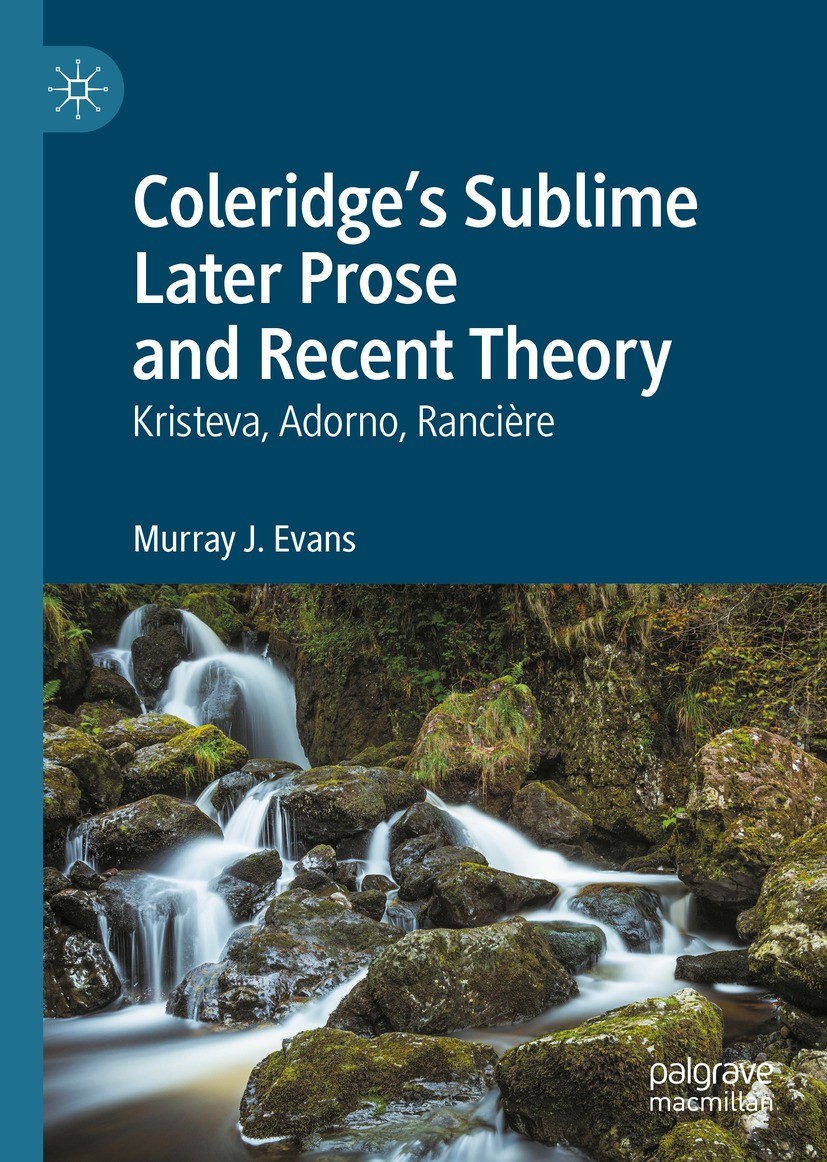The Friends of Coleridge present:
Saturday 16 March, 6pm (UK)
Murray Evans on Coleridge’s Sublime Later Prose and Recent Theory
https://liverpool-ac-uk.zoom.us/j/95050286332?pwd=TEpxNDNQRkV1eXBqTVg5eVBvZ0JZQT09
Meeting ID: 950 5028 6332
Passcode: !8fSntS#
About the talk:
Join us for this online event with Murray Evans delving into the world of Coleridge’s sublime later prose in dialogue with recent literary theory.
Abstract:
Coleridge’s Sublime Later Prose and Recent Theory: Kristeva, Adorno, Rancière (Palgrave Macmillan, 2023) explores the sublime in Samuel Taylor Coleridge’s later major prose in relation to recent theories of the sublime. Departing from Coleridge’s Lay Sermons (1816-17) and two lectures on the Middle Ages (1818), this monograph pairs his Confessions of an Inquiring Spirit (wr. 1824) with Kristeva’s This Incredible Need to Believe (2006), on sublimity, Christianity, and psychoanalysis. It explores Aids to Reflection (1825) with Theodor Adorno’s Aesthetic Theory (1970), on the sublime, the demise of symbolism, and theology. Finally it pairs On the Constitution of the Church and State (1829) with Jacques Rancière’s Aisthesis (2013), on sublimity and sociopolitical change. Dialogue between Coleridge and these modern theorists opens new avenues for understanding each author better, as well as for appreciating the abiding importance of the sublime for modernity.
My presentation will focus on the example of sublime discourse in Coleridge’s Aids to Reflection (AR) and Adorno’s Aesthetic Theory. One of Coleridge’s problems in writing AR is to find a language and a structure for his planned anthology of Archbishop Robert Leighton’s aphorisms and his own comments. This problem also involves a tension between the sublime, what he also calls “the Vast,” and its antithesis—“a mass of little things.” In this connection, in AR he cannot imitate the “silvery-grey” tone of Leighton’s writing: a unity of tone evoking his readers’ felt understanding and faith. Instead, a departure from his earlier view and practice of symbolism in the Statesman’s Manual, and his emerging sublime rhetoric, prevent him from cultivating a symbolic sense of intuitive wholeness. His rhetoric must now provide, through figures other than symbol, successive and contradictory glimpses of his all-important Ideas. One such idea is the doctrine of redemption. Reading AR together with Adorno’s Aesthetic Theory, moreover, also has its advantages. One of these is the pertinence for Coleridge of Adorno’s genealogy of the sublime, from Kant and the Romantics through to modern art when the “sublime ultimately reverses into its opposite”: the fate of a fallen theology in modern art. In particular, Adorno’s thoroughgoing rejection of symbolism, “the unity of the universal and the particular,” illuminates the beginning of this process in Coleridge’s more gradual departure from symbolism. Nevertheless, Coleridge’s distinctive combination of the sublime with Christian theology does not disappear in the “blackness” of Adorno’s modern art. Adorno’s dialectical theory of sublimation asserts that past historical versions of the sublime are not only altered but also retained, “sedimented” in the present of modern art. In this way, Adorno’s sublime discourse is one possible version of what Coleridge’s sublime and theology might become in our times. Finally, reading Coleridge’s sublime depiction of the Gothic cathedral in his 1818 lectures, when one’s “whole being expands into the infinite,” is also pertinent for Adorno. The Coleridge passage illuminates Adorno’s elusive idea of truth content in art, discovered by participants’ “shudder”—a dispersive shattering of the empirical self in order to reach the objectivity of the artwork.
About the speaker:
Dr. Murray Evans is Professor Emeritus of English at the University of Winnipeg and Retired Fellow at St John’s College, University of Manitoba, Canada. He was a Bye Fellow at Robinson College, Cambridge, and is an Associate of the Royal Conservatory of Music, Toronto (Piano Performance). His past teaching includes courses in medieval literature and medievalism, Coleridge, children’s literature, “Inklings” C.S. Lewis et al., literary history, and literary theory. He is the author of Rereading Middle English Romance: Manuscript Layout, Decoration, and the Rhetoric of Composite Structure (McGill-Queen’s, 1995) and Sublime Coleridge: The Opus Maximum (Palgrave, 2012) and has also published essays on Malory and the Malory manuscript, Chaucer, Piers Plowman, Coleridge, and C.S. Lewis.
About the organizers:
The Friends of Coleridge, founded in 1986 by David Miall and Rosemary Cawthray, exists to foster interest in the life and works of the poet Samuel Taylor Coleridge and his circle. We pursue our aims by publishing the journal The Coleridge Bulletin, edited by Jeffrey Barbeau; by hosting a biennial Summer Conference, directed by Tim Fulford and Joanna Taylor; and by running events and workshops for members of the society, for schools and other institutes of education, and for the general public. Membership is open to all. For details of how to subscribe please visit https://www.friendsofcoleridge.com/Join. We also welcome any enquiries. Please visit our Contacts page https://www.friendsofcoleridge.com/Contacts, or for queries about digital events, email to Tom Duggett at tjed@st-andrews.ac.uk.





